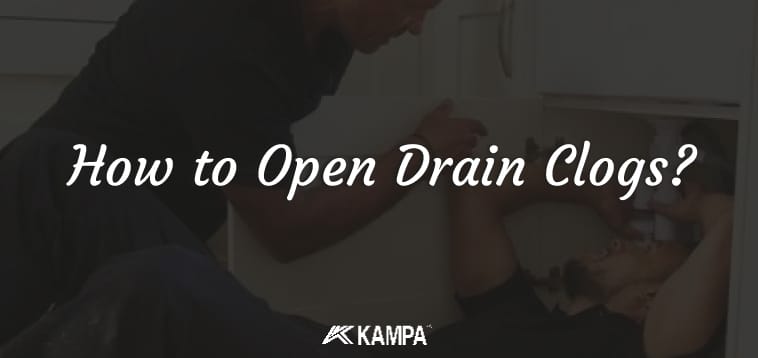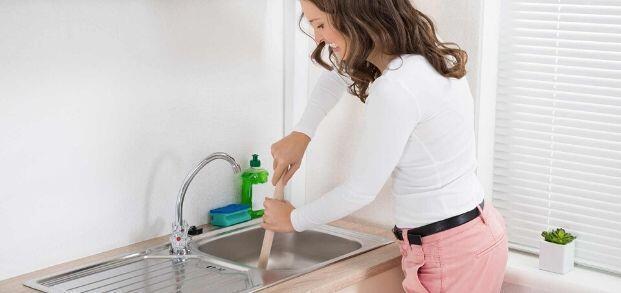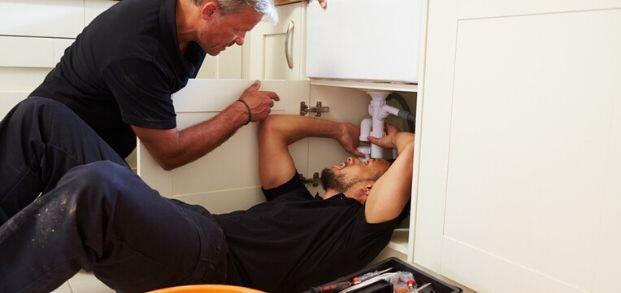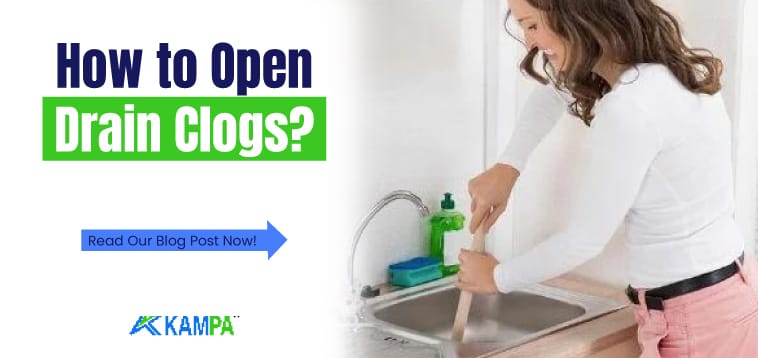How to Open Drain Clogs?
Sink drain blockages can happen when you least expect it. Here are a few tips on what to do in such a situation.How to open drain clogs?
Table of Contents
Obviously, the most reliable way to unclog drains is to get help from a plumbing professional. But this can be a bit costly and time-consuming. Here I share with you 6 urgent solutions that you can use in these moments.

Pumping for Drain Blockages
Pumping is the first method to try for all blockages. First obtain a pump to unclog the blockage. Drain the water that has accumulated in the reservoir.
Visually inspect the drain and remove any solid particles. Glue the pump hub so that it fits exactly in the center of the drain and start pumping.
Pump the pump up and down for 30 seconds to 1 minute. Check if the blockage is cleared by opening the water.

Vinegar and Baking Soda
This is a classic drain cleaning method, albeit an old one from the grandmothers. It has been used with care for years and gives results. Pour some baking soda down the drain. Be careful to pour the baking powder as evenly as possible.
Then pour an equivalent amount of vinegar into the baking soda. The vinegar and baking soda will react and start to foam. Don’t worry! This solution will dissolve the blockages and accumulated fat and help it drain.
Allow the gushing solution to remain in the drain for a few minutes. Then drain the puddles by pouring hot water down the drain. If this process does not give results, you can repeat it several times.
Remove Debris from the Bottom of the Drain for Drain Clogs
Solid materials such as hair, paper and food waste can accumulate at the mouth of the drain and cause blockages. The best way to clear this blockage is to remove the debris. There are several different ways to do this.
- You can first try to take it by hand.
- Bend one end of a metal coat hanger into a hook shape to remove interlocking structures such as hair, string, etc. Use the hook end to try to pick up hair and other waste.
- Apart from these two methods, you can open the blockages in the drains with unblocking machines. However, in an emergency, you can get help from a plumber as you will not be able to find an unclogging machine immediately.
Cleaning Pipes with Elbows

Under each sink there is a bending pipe with an elbow. It connects the drain from the sink to the drain in the wall. A small amount of water is always retained in the bends of these pipes.
Because it prevents the gases in the sewer from spreading through the pipes into the house. But the curved area can often become clogged with debris. Like debris, tea waste, grease, hair… This can cause blockages in the drain.
The best way to clean the blockage in elbow pipes is to disassemble the pipe and clean the inside. Always wear gloves before starting work. Turn off the water to the sink.
Place a bucket under the pipe. Remove the nuts used to secure the pipe. When the pipe is disconnected from the installation, clean the part thoroughly. Yes, this is a bit dirty!
Boiling Water for Drain Blockages
Obviously this method does not always work, but it is the shortest method that can be tried. Boil a pot of water and pour as much boiling water down the drain as possible, being careful not to be too fast.
The warmth of the water will help break down the greasy build-up that can cause blockages. You can also try a little washing-up liquid and pumping.
De-clogging Bacteria for Drain Clogs

These de-clogging bacteria are used in domestic and industrial applications;
- It puts an end to slow drainage, pipe blockages, waste accumulations. It is low cost, efficient and economical.
- The use of bio-pure eliminates the need for chemical application and the corrosion effect caused by these chemicals.
- Bio-pure is simple to use, saving you time by eliminating manual cleaning.
- It has a natural pH and is recyclable.
- Bio-pure enzymes and bacteria were ranked 1st among 132 options in a 2-year study sponsored by the United Nations.
Where are decongestant bacteria used?
- In oil puddles,
- Drainage blockages,
- Toilet, bathroom blockages,
- Garbage Outlets,
- Municipal Wastewater Ponds, Wastewater Systems,
- It is used in areas such as Food Service Operation.
Available for home sale in small 30 gram packs. Add it to your shopping list and keep it at home for emergencies. The biggest cause of drain blockages is the lime in the water, if your water is too chalky, click here to buy a water purifier. Click here for information about water purifiers.

